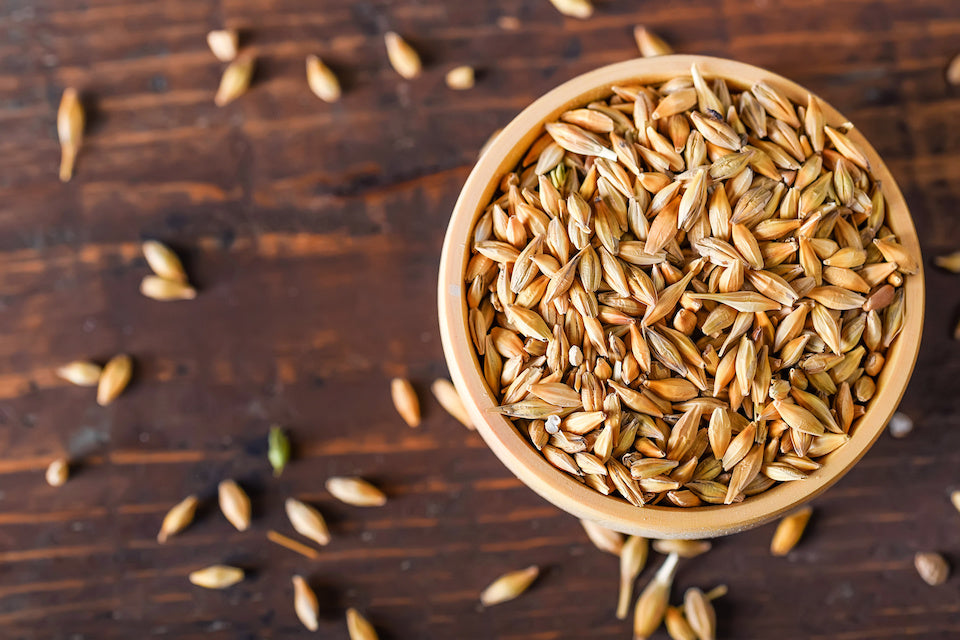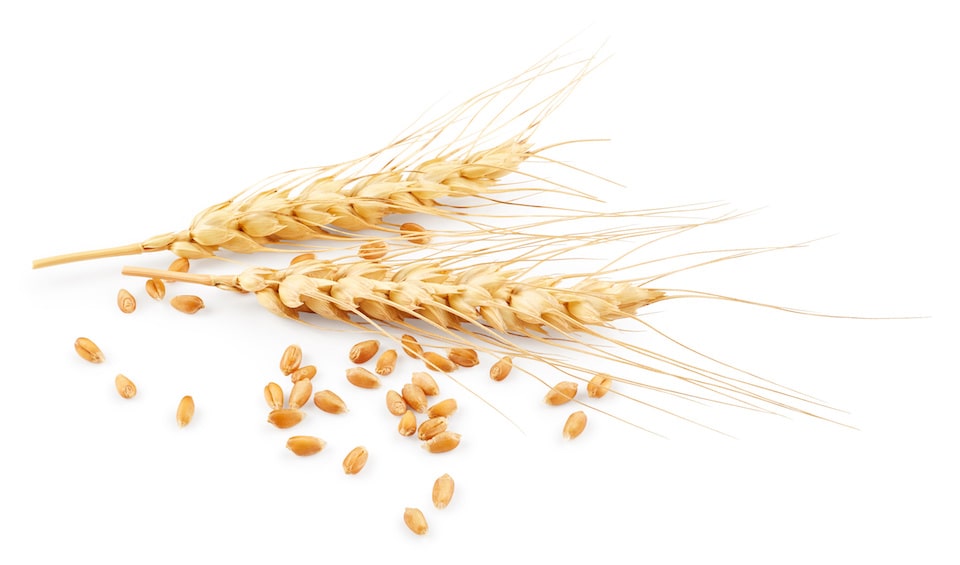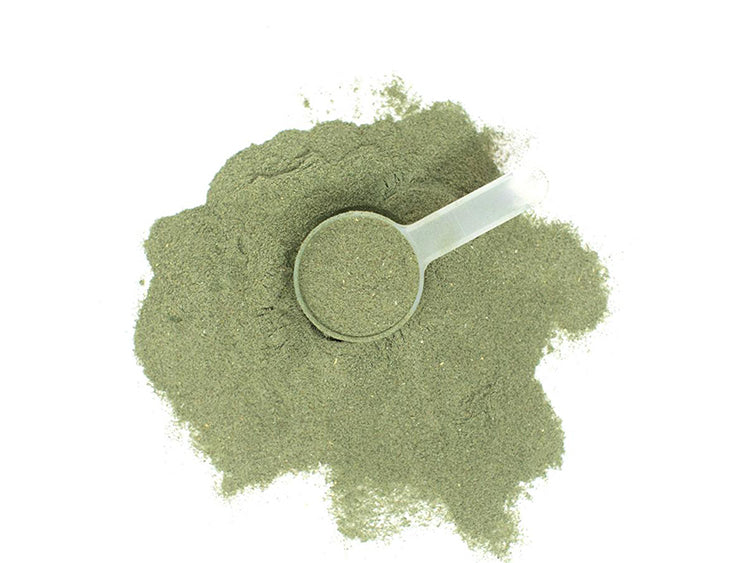Our editorial team is made up of subject matter experts with extensive, real-world clinical experience who are highly trained in evaluating clinical research. Read more about our editorial policy here.
Barley vs. Wheat: Which is Better? What Is the Difference Between Them?

IS BARLEY OR WHEAT BETTER FOR ME?
Cereal grains are some of the most common sources of energy available to our society. They are powerful sources of essential vitamins, fiber, and phytochemicals (plant nutrients) that are crucial for optimal human health.
They are versatile seeds from grasses that our ancestors cultivated for bread, beer, oats, and maize products.
Cereal grains like barley and wheat are often cited as nutritional gemstones --incorporating them into your diet can help you meet daily requirements for whole grains and fiber.
However...many readers are unfamiliar with the nuanced nutritional differences between barley vs. wheat.
When deciding on barley vs. wheat, it is important to consider:
FIBER
Barley has a slightly higher fiber count than wheat.
Although barley and wheat contain high amounts of fiber per 100 grams, we really are splitting hairs when deciding which is the better source.
However, barley comes out on top by containing more fiber than wheat at the same weight.
PROTEIN
Both hulled barley and whole-grain wheat are comparable sources of protein.
PREPARATION
Barley can be prepared relatively quickly -- much like rice.
Wheat must be processed and ground into something useable.
AVAILABILITY
Wheat is the most available cereal grain in the world -- Barley comes in as the fourth most-grown cereal.
TASTE
Wheat has a weaker -- less pronounced depth of flavor than Barley.
In many cases, the amount of fiber in both are the main reason for wheat and barley’s substantial health benefits.
TO BETTER UNDERSTAND HOW THE TWO ARE SIMILAR, DIFFERENT, AND WHICH ONE IS THE BEST FOR YOU -- WE'LL BE TAKING A LOOK AT...
- Nutritional content of Barley
- Nutritional content of Wheat
- Barley and Wheat Comparisons
- Adding Barley + Wheat to your Diet
Cereal grains have been irreplaceable in the human diet for thousands of years and are staples necessary for the survival of millions of people. Even more critical, their chemistry offers important clues into their applications to our health.
Let's get into it...
WHAT IS BARLEY?

Barley, known by its Latin name Hordeum vulgare, is the fourth most important cereal grain in the world -- wheat, corn, and rice have it beat and it's popularity known by many is its importance in the production of beer.
The quality of their malt and their total yield depends on the size of the grain and their overall weight.
Barley is highly versatile! It can be processed fine into flour or served as a whole grain. It has a light, slightly nutty flavor profile and pairs well with foods that are usually served with whole wheat products.
Barley is often processed into two forms; hulled or pearled.
- Hulled barley simply has its hard, inedible shell casing removed --preserving the bran.
- Pearled barley has the outer shell and bran removed, resulting in a less nutritious product.
Barley nutrition is fascinating compared to other whole grains...
100 GRAMS OF HULLED BARLEY CONTAINS:
- 354 calories.
- Fiber (17.3 g)
- Vitamin E (.06 mg)
- Vitamin K (2.2 mcg)
- Folate (19.0 mcg)
- Calcium (33.0 mg)
- Magnesium (133 mg)
- Phosphorus (264 mg)
- Potassium (452 mg)
Barley health benefits are directly related to its high fiber content. A diet high in fiber has been linked to improved cardiovascular and metabolic outcomes in adults.
Evidence also suggests that certain crops of barley are able to increase the body’s concentration of GABA -- a neurotransmitter that inhibits nerve transition in the brain which reduces anxiety and promotes feelings of well-being, relaxation, heightened cognition, and better sleep.
The next time you decide on adding a healthy bonus to your diet and fiber requirements consider supplements that use hulled barley.
Better yet, cook some up for yourself -- its preparation is relatively simple compared to other whole grains that require additional processing to be edible! Tasty and versatile, barley is a wonderful grain that can supercharge your health.
WHAT IS WHEAT?

Wheat (Latin name: Triticum) is a popular whole-grain and one of the most widely-used cereal crops in the world. Over 150 metric tons of wheat are traded around the world every single year. Its unmatched versatility as an ingredient has made it one of the most profitable, available, and nutritious cereal grains.
Wheat is often processed into bleached white flour, however this type of processing can remove up to 40% of the original grain -- such as the bran and germ that have the most nutrients.
Opting for products that are completely whole wheat is a better option as the nutrient content is preserved. These can include products made with whole wheat flour.
Whole-grain wheat flour nutrition can be broken down into the following nutrient quantities...
100 GRAMS OF WHOLE-GRAIN WHEAT FLOUR CONTAINS:
- 332 calories
- Fiber (13.1 g)
- Vitamin A (9 IU)
- Vitamin E (.53 mg)
- Folate (28.0 mcg)
- Calcium (33.0 mg)
- Magnesium (117 mg)
- Phosphorus (323 mg)
- Potassium (394 mg)
Phosphorus, potassium, and folate are crucial dietary minerals and vitamins that maintain different bodily functions. Phosphorus allows our tissues to develop and grow. Potassium is needed for our neurons to function well. Folate is needed to make red blood cells, white blood cells, and turn dietary carbohydrates into energy.
Similar to barley, wheat cannot be fully digested. Its high fiber content -- combined with its nutrient profile -- may provide a protective effect against heart disease and obesity.
Societies that primarily eat a lot of whole-grain foods (at least 210 grams per day) like wheat have a reduced risk for heart disease, cardiovascular disease, cancer, and death from chronic diseases. There is strong evidence that whole grain diets -- those that include wheat -- significantly reduce the likelihood of developing colon cancer, in particular.
BOTTOM LINE
That’s why combined the best of both worlds -- great flavor, natural supplementation, and a high fiber content that doesn’t feel heavy.

With ATH Veggies - you receive a blend of:
- Fiber
- Algae
- Alkalizing greens
- Adaptogens
- Immunity booster
- Energy enhancers
Quality is at the heart of ATH Organic’s mission, and whether you choose wheat, barley, or any other plentiful whole grain choice, we have you taken care of with organic blends that fit into your lifestyle and fitness journey.
FREQUENTLY ASKED QUESTIONS
WHAT ARE THE HEALTH BENEFITS OF BARLEY?
Barley is rich in minerals, vitamins, and antioxidants. When consumed as a whole-grain, Barley is high in fiber, manganese, and selenium as well as Vitamin B1, copper, magnesium, phosphorus, chromium, and niacin.
CAN I EAT BARLEY EVERYDAY?
In a study conducted on 28 healthy participants throughout a 4-week period, it was found that 60 grams of Barely a day increased healthy gut bacteria, improved blood sugar levels, and reduced inflammation.
WHAT ARE THE HEALTH BENEFITS OF WHEAT?
Consumed as whole-grain wheat -- it is a great source of essential nutrients such as; Vitamin B6, calcium, thiamine, niacin, selenium, manganese, phosphorus, copper, and folate.
WHAT ARE THE BENEFITS OF WHOLE GRAINS?
Adding whole grains -- rich in nutrients and fiber -- to your diet can have ample benefits to promote a healthy lifestyle. Consuming whole grains can...
- Decrease the risk of Heart Disease, Type 2 Diabetes, and Stroke.
- Support Healthy Digestion
- Reduce Chronic Inflammation



